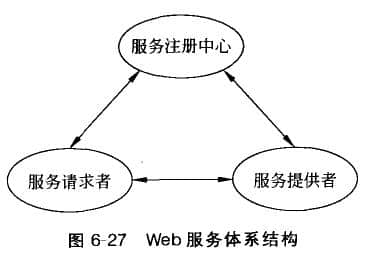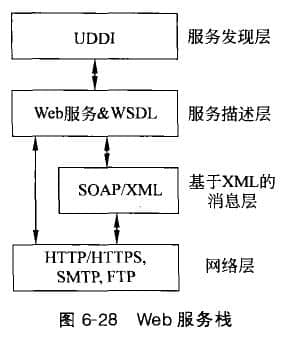What is the core of Web services?
Source: Shangpin China |
Type: website encyclopedia |
Time: June 16, 2014
Web services refer to online application services released by enterprises to fulfill their special business needs Website construction company Or application software can access and use this online service through the Internet. There are many definitions of Web services, the core of which is Service Oriented Architecture (SOA), that is, remote access to applications through perfect interfaces. By providing simple and universally applicable standards, Web services can serve as the basis for information system integration and automated information exchange between systems. From a technical point of view, Web service is a development mode that can be used to solve the application integration problem across the network. This mode provides 7 technical guarantees for the realization of "Software as a Service (SaaS)". In essence, "software as a service" is a mechanism for providing software services. This mechanism can provide programmable interfaces on the network and share the functions that have been opened by the site through these interfaces. 1. Web service architecture The architecture of Web services is shown in Figure 6-27. Service providers (servers) and service requesters (clients) are required, and service registries are optional roles. The service provider is the owner of the Web service, such as the enterprise, ICP (Internet Content Provider), etc. The role is responsible for defining and implementing the Web service, using the service description language to describe the Web service in detail, accurately and normatively, and publishing the description to the service registry for the service requester to find and bind. Service requesters are consumers of Web services. Although Web services are program oriented, the final users of the program are still enterprises or users. Therefore, service requesters are applications that find, bind, and call services or interact with services. This role can be played by browsers and controlled by people or programs. The service registry is the link between the service provider and the service requester. In some cases, this role is optional. For example, using a statically bound Web service, the service provider can directly send the description to the service requester. If there is no service registry, service requesters can get service descriptions from other sources, such as files, FTP sites, Web sites, etc. The operations in the Web service model include the following three types: publishing service descriptions, searching service descriptions, binding or calling services according to service descriptions. 2. Web service technology platform Web service platform consists of basic technologies and protocols supporting Web services, mainly including HTTP, XML, SOAP, UDDI, WSDL, WSIF and WSFL. They form the basis of the standard mechanism for T to discover and invoke the functions provided by an independent Web service. The Web service stack is represented in a hierarchical structure. The high-level is built on the low-level, as shown in Figure 6-28. (1)HTTP Hypertext Transfer Protocol (HTTP) is the most widely used network protocol on the Internet. All www files must comply with this standard. HTTP was originally designed to provide a way to publish and receive HTML pages. (2) XML XML (Extensible Markup Language) can extend markup language. Like HTML, it is based on SGML (Standard Generalized Markup Language) XML is a data storage language that uses a series of simple tags to describe data. XML is a cross flat, content dependent technology in the Internet environment and a powerful tool for processing structured document information. (3) SOAP SOAP is a widely accepted message transmission protocol. It is a lightweight protocol designed for information exchange. It is used to exchange structured data between network applications. It is an XML based mechanism. SOAP mainly provides a framework for calling services across the Internet in a distributed and decentralized environment, and provides a cross platform integration mechanism independent of programming languages and the underlying infrastructure of distributed objects. (4) WSDL The interface of the Web service is defined by the XML based WSDL, which provides all the information necessary for the application to access the specified Web service, and describes what functions the service provides, where the service is located, and how the service is invoked. WSDL describes network services in XML format, describing services as a set of endpoints operating on messages containing process oriented or document oriented information. Operations and messages are abstractly described, and then bound to specific network protocols and message formats to define an endpoint. Related concrete endpoints are combined into abstract endpoints (services) WSDL is extensible and allows to describe any endpoint and message, regardless of the message format or network protocol used for communication. One of the goals of Web services is to allow applications to choose between two or more equivalent services in a standard way, because sometimes applications can be constructed from components implemented as network supporting services, or even dynamically selected from these services. The service description layer defines the description mechanism required to provide sufficient information for the program, so that the program can select services according to certain criteria, such as service quality, security, reliability, etc. (5) UDDI In the face of extremely rich services, the most common problem is "Where and how to find the required information?" The UDDI specification defines another layer on the basis of the underlying protocol. At this layer, different enterprises can describe their own services and query the services provided by each other in the same way. UDDI is a set of web-based, distributed information registry implementation standards for web services, and also includes a set of implementation standards for access protocols that enable enterprises to register their own web services so that other enterprises can discover them. 3. Field of implementing Web services Integrating the characteristics of current Web applications and Web services, the fields of implementing Web services can be divided into the following four categories. (1) Business Oriented Web Service for enterprise business domain. This type of service is aimed at enterprise oriented application services, including ERP systems within enterprises and SCM/CRM systems between enterprises. When these systems appear in the network in the form of Web services, application integration in enterprises will be easier. It is also possible to connect systems among many enterprise partners. (2) Consumer Oriented Web Service. This kind of service is aimed at the transformation of the original B2C websites, adding a Web service application interface to these browser based Web applications, so that third-party desktop tools or their own desktop tools can use a better user interface to provide desktop services across multiple B2C services, which will make it more convenient for users to use the Internet, More convenient services can be obtained. For example, people can completely integrate (call) the stock price query Web service and ticket booking Web service on the Internet in the personal financial management desktop system, making the personal financial management application system more automated. (3) Device Oriented Web Service. The terminals of this kind of service are generally handheld devices and household appliances. For the former, the previous network service can support other terminals besides PC, such as Palm, Pocket PC, mobile phone, etc. without modifying the network service architecture. In this way, weather forecast service, E-mail service, active information service, etc. will become more effective and convenient. For household appliances, it may be the starting period of a market. With Web services as the basic framework, intelligent household appliances will really get the support of standards, which makes it possible for them to be widely used. (4) System Oriented Web Service. If some traditional system services, such as user authority authentication, system monitoring, etc., are migrated to the global Internet or the intranet within the enterprise, their scope of action will expand from a single system or local network to the entire enterprise network or the entire Internet. Therefore, different applications based on the same system services will be deployed in the entire Internet environment, For example, all online services of multinational enterprises can use the same user authority to authenticate Web services. Web services not only provide a new way of communication between information systems, but also bring a new way of thinking for software components. Services used on one system will evolve into reusable components on other systems. Making full use of the functions in the existing information system and transforming them into components that can be reused in a new combination way can significantly reduce the construction cost of new applications.
Source Statement: This article is original or edited by Shangpin China's editors. If it needs to be reproduced, please indicate that it is from Shangpin China. The above contents (including pictures and words) are from the Internet. If there is any infringement, please contact us in time (010-60259772).








